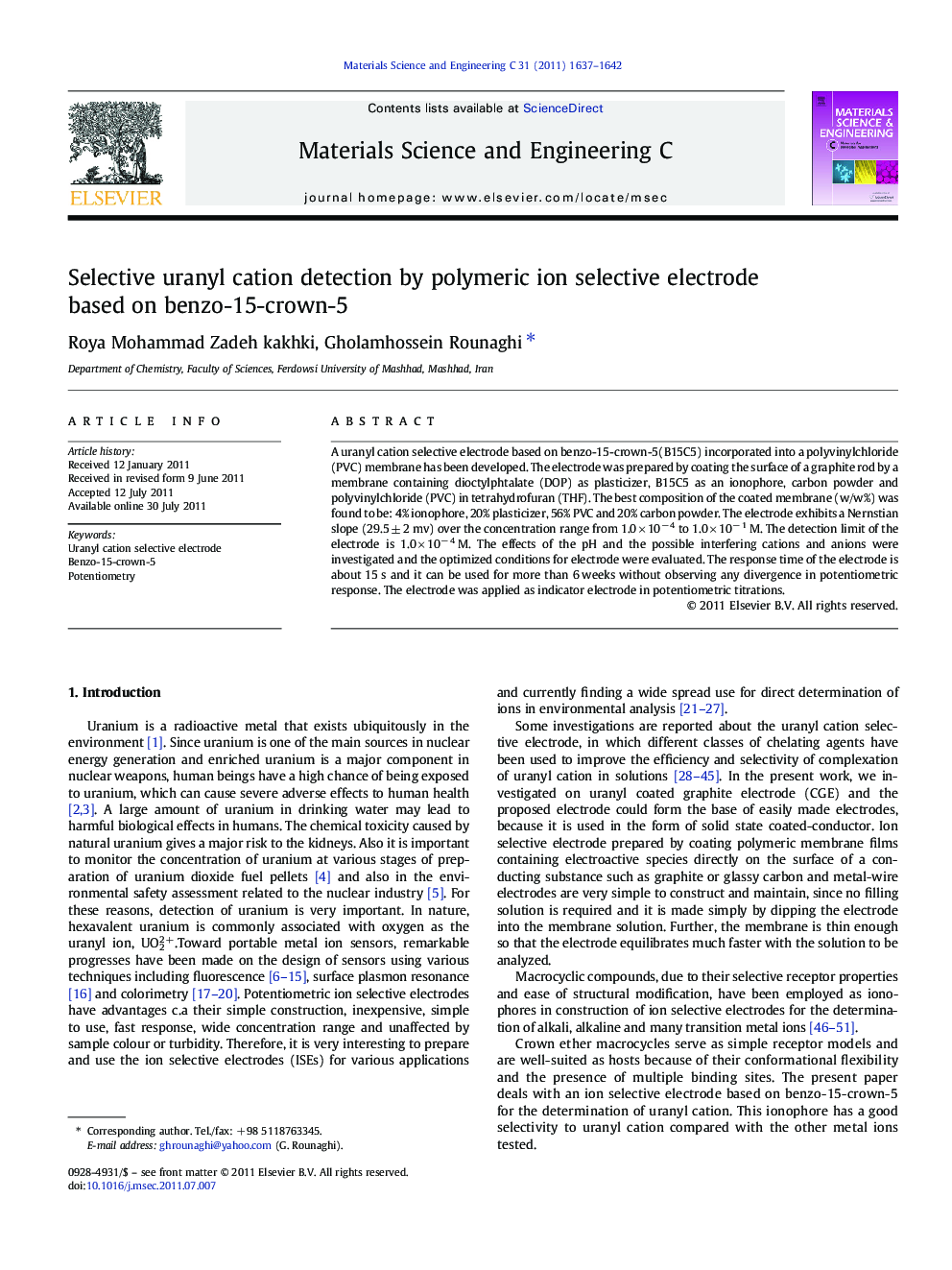| Article ID | Journal | Published Year | Pages | File Type |
|---|---|---|---|---|
| 1429811 | Materials Science and Engineering: C | 2011 | 6 Pages |
A uranyl cation selective electrode based on benzo-15-crown-5(B15C5) incorporated into a polyvinylchloride (PVC) membrane has been developed. The electrode was prepared by coating the surface of a graphite rod by a membrane containing dioctylphtalate (DOP) as plasticizer, B15C5 as an ionophore, carbon powder and polyvinylchloride (PVC) in tetrahydrofuran (THF). The best composition of the coated membrane (w/w%) was found to be: 4% ionophore, 20% plasticizer, 56% PVC and 20% carbon powder. The electrode exhibits a Nernstian slope (29.5 ± 2 mv) over the concentration range from 1.0 × 10− 4 to 1.0 × 10− 1 M. The detection limit of the electrode is 1.0 × 10− 4 M. The effects of the pH and the possible interfering cations and anions were investigated and the optimized conditions for electrode were evaluated. The response time of the electrode is about 15 s and it can be used for more than 6 weeks without observing any divergence in potentiometric response. The electrode was applied as indicator electrode in potentiometric titrations.
► We proposed an ion selective electrode based on benzo-15-crown-5 for the determination of uranyl cation. ► The electrode exhibits a Nerenstian slope (29.5 ± 2 mv) over the concentration range 1.0 × 10–4 to 1.0 × 10–1 M. ► The working pH range of the sensor is 4–7. ► The response time of the electrode is about 15s. ► This sensor offers the advantages of simple construction, low cost and good selectivity toward interfering ions.
